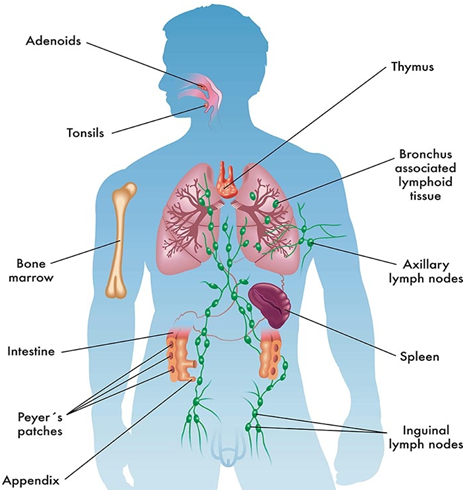ELISA is the acronym for “enzyme linked immunosorbent assay”. It is an immunoassay or serological test that is used for the quantification or identification of specific antibodies or antigens in biological specimens (e.g. serum or blood). ELISA is mainly based on the principle of enzyme-substrate reaction. In ELISA, an enzyme (e.g. horseradish enzyme and beta-galactosidase enzyme) conjugated with an antibody reacts with a colourless substrate (i.e. a chromogenic substrate) to produce a coloured reaction or product.
The intensity of the coloured product produced in the course of performing the ELISA experiment is measured with a spectrophotometer; and this is usually done by taking the optical density (OD) of the colour produced on the machine (i.e. the spectrophotometer or colorimeter). ELISA is commonly used in clinical immunology/medicine as a screening test to detect HIV antibodies in patient’s serum.
ELISA technique can also be used to evaluate the presence of drugs, hormones, serum proteins antibiotics and pathogenic microorganisms in clinical samples. They can also be used to detect biomarkers for cancerous cells as well as antibodies for hepatitis B virus, parasites (e.g. Toxoplasma gondii) and rubella viruses amongst other viral agents.
ELISA, an immunosorbent assay can also be used for the presumptive assay or quantification of proteins in biological materials. ELISA is a better alternative to radioimmunoassay (RIA) which basically makes use of a radioactively labeled substance or radioisotopes to detect antigens or antibodies in samples; and due to the health-risk of handling radioisotopes or radioactive materials because of possible human contamination, ELISA is most preferably used in most clinical and research laboratories when quantifying or detecting antigens or antibodies in specimens.
ELISA test is performed in microtiter plates (an assay plate that comprises of 96 wells). There are two procedures involved in the ELISA technique: the indirect ELISA (which detects the presence of antibodies in biological samples) and the sandwich ELISA (which detects the presence of antigens in biological samples).
In indirect ELISA (which is commonly used in clinical medicine/immunology to assay for antibodies to HIV in patients serum), the sample to be analyzed (e.g. serum) which is suspected of containing the antibody of interest is added to an antigen-coated well (i.e. the antigen is immobilized on the well of the microtiter plate). The antigen is absorbed onto the well(s) of the microtiter plate during immobilization or incubation.
The antibody in the sample is allowed for some time to react with the antigen coated to the well(s) of the microtiter plate (Figure 1). (Note: The antibody in the sample being analyzed is known as the primary antibody). The microtiter plate is washed with a buffer/distilled water, and free antigen molecules (i.e. antigens that did not react or become attached to the antibodies in the samples) are washed in the process.
An enzyme-conjugated antibody (known as the secondary antibody) which binds to the primary antibody (i.e. the antibody in the test sample) is added to the microtiter plate in order to evaluate or determine the presence of antibody bound to the antigen. (Specific antigen present in the test sample binds to the coated antigens on the wells of the microtiter plate).
Free or unbound secondary antibody is washed away. After washing, a substrate that reacts specifically with the enzyme is then added to the wells of the microtiter plate; and the enzyme reacts with the substrate to produce a coloured reaction or product. The absorbance of the coloured product is measured in a spectrophotometric device which gives a value that is used to infer the presence of the antibody of interest in the test sample.
In sandwich ELISA otherwise known as the double antibody sandwich immunoassay, the wells of the microtiter plate are coated or immobilized with antibodies unlike in indirect ELISA where the wells are coated with antigens. The test sample containing the antigen is added to the wells of the microtiter plate containing the immobilized or attached antibody and allowed for some time to react.

The microtiter plate is washed to remove unbound or free antigen; and an antibody-enzyme conjugate that is specific for the bound antigen is then added to the wells of the microtiter plate. The microtiter plate is washed again to remove unbound or free antibody; and a substrate specific for the bound enzyme molecule is then added to the wells of the microtiter plate.
After reacting with the substrate, the enzyme converts the substrate into a coloured product whose optical density (OD) is measured in a spectrophotometer. Sandwich ELISA is used in bacteriology for the laboratory diagnosis of some bacterial related infections or diseases included those caused by but are not limited to Salmonella species, Vibrio cholerae and Helicobacter pylori and food allergens amongst others.
REFERENCES
Abbas A.K, Lichtman A.H and Pillai S (2010). Cellular and Molecular Immunology. Sixth edition. Saunders Elsevier Inc, USA.
Actor J (2014). Introductory Immunology. First edition. Academic Press, USA.
Alberts B, Bray D, Johnson A, Lewis J, Raff M, Roberts K and Walter P (1998). Essential Cell Biology: An Introduction to the Molecular Biology of the Cell. Third edition. Garland Publishing Inc., New York.
Bach F and Sachs D (1987). Transplantation immunology. N. Engl. J. Med. 317(8):402-409.
Barrett J.T (1998). Microbiology and Immunology Concepts. Philadelphia, PA: Lippincott-Raven Publishers. USA.
Jaypal V (2007). Fundamentals of Medical Immunology. First edition. Jaypee Brothers Medical Publishers (P) Ltd, New Delhi, India.
John T.J and Samuel R (2000). Herd Immunity and Herd Effect: New Insights and Definitions. European Journal of Epidemiology, 16:601-606.
Levinson W (2010). Review of Medical Microbiology and Immunology. Twelfth edition. The McGraw-Hill Companies, USA.
Roitt I, Brostoff J and Male D (2001). Immunology. Sixth edition. Harcourt Publishers Limited, Spain.
Zon LI (1995). Developmental biology of hematopoiesis. Blood, 86(8): 2876–91.
Discover more from #1 Microbiology Resource Hub
Subscribe to get the latest posts to your email.


